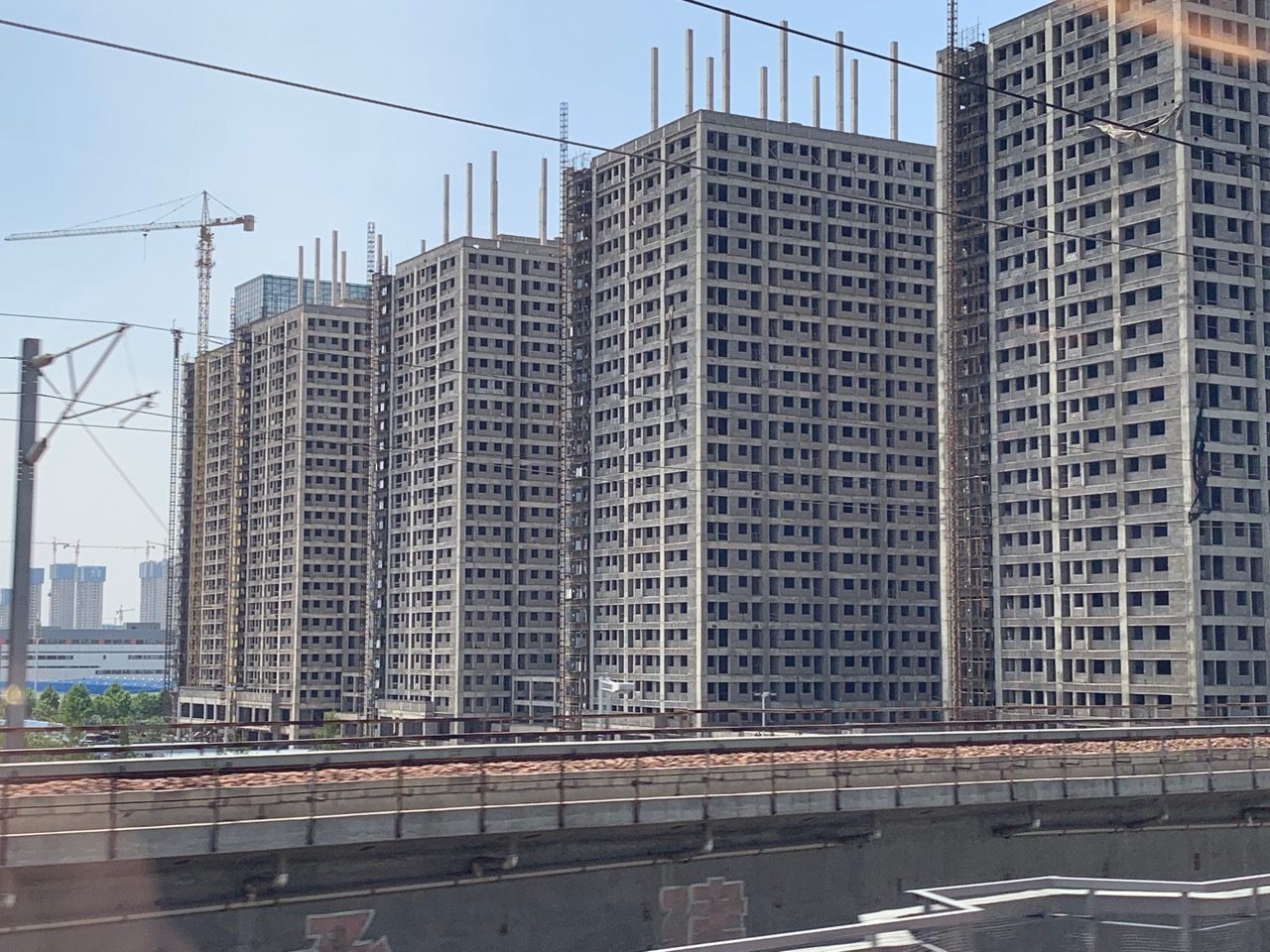The last time I was in Hong Kong, I decided to take the train up to Beijing rather than fly. The last time I had taken a train along that route, it was still an epic 24-hour journey. The new high-speed rail does it in nine hours, leaving Hong Kong at 8am and arriving in Beijing at 5pm. I thought it might be a good way to see big chunk of the country in daylight hours.

It’s not a ride I would suggest to regular tourists: nine hours is still a pretty long journey, even in a relatively comfortable train seat. And indeed very few people who got on the train with me in Hong Kong got off in Beijing; most were headed to a stop somewhere in between. There’s also not a lot of scenic views. Probably the nicest part of the trip was the southern bit of Hunan, just over the border from Guangdong, which is lovely, green and hilly.

But the trip would probably be more interesting for another species of traveler: the economics tourist. You might not see a lot of postcard-worthy views, but you will learn something about the structure of the Chinese economy. What you can see from the train is a lot of construction: urban sprawl, Chinese-style:



This is in fact a rare privilege: to be able to see with the naked eye the structure of a country’s economy. After all, most macroeconomic variables are not available to simple visual inspection. Anecdotal impressions of inflation, for instance, are famously unreliable because of standard cognitive biases (people only notice price changes in items whose prices change a lot or that they buy a lot, and aren’t good at aggregating to a representative basket). And it’s not really possible to discern, just by walking around, changes of a few tenths of a percentage point in the growth rate of multi-trillion-dollar economic aggregates.
But I think it is possible to tell, just by looking, the difference between an economy that spends over 40% of GDP on investment, like China, and one that spends closer to 20%, like the US. To spend a nine hour high-speed train journey looking mostly at construction is to see a lot of construction. This is what spending almost half of national income on investment looks like. And that is not an experience you can have anywhere else.
To be fair, the reason you can see so much construction from the train is not just that China builds a lot in general. A lot of new construction is also concentrated around the high-speed rail lines, so the view from the train is not the view from everywhere. The reasons for this particular pattern of urban sprawl are well explained in this ADB paper by two authors from the Department of Urban Planning of Tongji University:
In the PRC, the “HSR new town” model has dominated the government planning in the site selection for HSR stations. In this model, most new station sites are located in suburbs or exurbs away from the large urban centers. The hope is that HSR stations will trigger the development of new towns. (In Western terms, these would be major metropolitan sub-centers or districts.) The plan is to stimulate local economic development by offering an attractive alternative location to the crowded city centers. Take the example of the 1,318 km Beijing–Shanghai HSR line. Of the 24 cities connected by the line, 18 chose to build HSR stations in suburbs. The reasons for suburban site selection included ensuring lower costs, capturing rising land values, and relieving pressure on the central areas of the cities.

Great post. Last time i took a HSR line (between Xi’An and Beijing), a lot of the construction looked like it had paused; it was a Monday morning and there didn’t appear to be many workers. Did you notice something similar?
I was traveling on a Sunday, so it was pretty quiet.
fascinating.
Love this. I have been done Shanghai Beijing for a long weekend, next time I hope to try Shanghai-Hong Kong.
that’s what happens when you have limited property tax. cities/ regions need to develop to fund themselves.